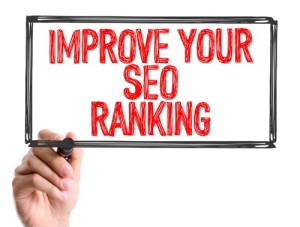-
Important Ranking Factors for SEO
 Questions we get asked most often are, “What can I do to improve my website rankings?” or “How can I get on page one of search results?” Unfortunately, there isn’t a simple answer. There are many important ranking factors that play a part in how well your website pages rank. We’ll address some of them in this article.
Questions we get asked most often are, “What can I do to improve my website rankings?” or “How can I get on page one of search results?” Unfortunately, there isn’t a simple answer. There are many important ranking factors that play a part in how well your website pages rank. We’ll address some of them in this article.One of the most important ranking factors for your website is whether or not it provides quality content that your customers and potential customers are looking for. Another factor is having a mobile-friendly website. Static desktop websites just don’t cut it any more. Search engines want to display the most relevant web pages to customers’ search queries not old, outdated and static content. And more people are using mobile devices instead of desktops to find that content. Learn more about creating quality content in our recent article, So you have a new website, now what?
We’ll review what search engines look for along with some simple tips you can follow to get you in the habit of writing and posting content with SEO in mind.
Important Ranking Factors
Quality Content: Consistently write/curate and post content that your customers and target audience are looking for. A good blog post has least a minimum of 300 words, but 1500-2000 word posts or pages are even better. Some industry studies have shown that pages with longer content made up of 1500+ words rank higher in Google.
Responsive Web Design: Mobile devices make up more than half of the web traffic these days so it’s important to have a mobile-friendly website. Google likes responsive design better than separate mobile websites, however, a separate mobile website is better than none at all.
Title Tags: Search engines read title tags to learn what content your page or blog post contains. There are six title tags (headings) you can use throughout your page or post (H1, H2, H3, H4, H5 and H6) The title tag is the most important on-page element. Use your focus keyword\keyword phrase in the title tags.
Blog title: Your blog title is really an H1 tag. Use your keyword or phrase in the first words of the tag.
URL: Use your keyword phrase in your URL. In WordPress for instance, make sure you change your permalinks from the default setting to the post name or custom setting. This means your URL will automatically be created to look like this example: http://www.wcmarketingsolutions.com/seo-important-ranking-factors instead of: http://www.wcmarketingsolutions.com/?p=123. Search engines will understand what the web page is about when it reads seo-important-ranking-factors rather than ?p=123.
Blog post content: Make sure to place your keyword phrase in the first 50 – 100 words of your blog post and continue to use that phrase throughout your entire article. Don’t overdo it. You’ll only want to use the phrase if it sounds natural. Using it 25 times throughout the post or page is the maximum.
Images: Image optimization is probably the most often overlooked but one of the more important ranking factors. Don’t upload a photo with a file name created from your digital camera or downloaded from an image site. Change the file name to include your keyword phrase before you upload it. In addition, you’ll want to use your keyword phrase in the image alt tag and image caption as well. For example, the image in this article originally had a file name of 90389229.jpg. Before uploading it, we changed it to seo-important-ranking-factors.jpg.
There’s a lot more work involved with search engine optimization (SEO) besides the important ranking factors listed above. For an overview of the initial steps required to get started with SEO please review our SEO Services.
Please feel free to ask a question or share your comment by posting it below. We’d love to hear from you!










Thanks. This is really helpful information. I never considered using keywords in my image file names but it makes good sense for SEO.